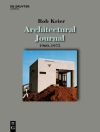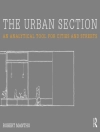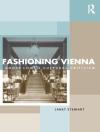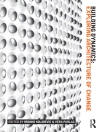‘If you are determined to encourage creativity and provide a
collaborative environment that will bring out the best in people,
you will want this book by your side at all times.’
–Bill Moggridge, Director of the Smithsonian’s
Cooper-Hewitt National Design Museum
‘Make Space is an articulate account about the
importance of space; how we think about it, build it and thrive in
it.’
–James P. Hackett, President and CEO, Steelcase
An inspiring guidebook filled with ways to alter space to
fuel creative work and foster collaboration.
Based on the work at the Stanford University d.school and its
Environments Collaborative Initiative, Make
Space is a tool that shows how space can be intentionally
manipulated to ignite creativity. Appropriate for designers charged
with creating new spaces or anyone interested in revamping an
existing space, this guide offers novel and non-obvious strategies
for changing surroundings specifically to enhance the ways in which
teams and individuals communicate, work, play–and innovate.
Inside are:
Tools–tips on how to build everything from furniture, to
wall treatments, and rigging
Situations–scenarios, and layouts for sparking creative
activities
Insights–bite-sized lessons designed to shortcut your
learning curve
Space Studies–candid stories with lessons on creating
spaces for making, learning, imagining, and connecting
Design Template–a framework for understanding, planning,
and building collaborative environments
Make Space is a new and dynamic resource for activating
creativity, communication and innovation across institutions,
corporations, teams, and schools alike. Filled with tips and
instructions that can be approached from a wide variety of
angles, Make Space is a ready resource for
empowering anyone to take control of an environment.
Tabella dei contenuti
Foreword
David Kelley
Preface
George Kembel
The Environments Collaborative
1. Instructions
2. Tools
3. Situations
4. Insights
5. Design Template
6. Space Studies
Index
Circa l’autore
Scott Witthoft’s professional work as an engineer and a
designer has focused on understanding and manipulating interactions
among systems. This has covered a spectrum including forensic
structural engineering, furniture design, and curriculum design.
Scott is an amateur musician with a love of stringed instruments.
As a Lecturer at Stanford University, he teaches classes in
human-centered design and storytelling and visual communication.
Scott has degrees in civil engineering from Washington University
in St. Louis (BS, ’99) and The University of Texas at Austin (MS,
’00), and product design from Stanford University (MSE ’08).
Scott Doorley’s work focuses on how physical context and
digital media can benefit human experience.
His installations with the Dacha Art Collective have been exhibited
in the San Jose Museum of Art and the Gray Area Foundation for the
Arts San Francisco. Currently he is the Creative Director at the
Stanford d.school, where he teaches classes in subjects at the
intersection of design and media arts: storytelling and visual
communication, improv, and digital media.
Scott has degrees in film from the University of California, Los
Angeles (BA ’96) and learning, design, and technology from Stanford
University (MA ’06).












